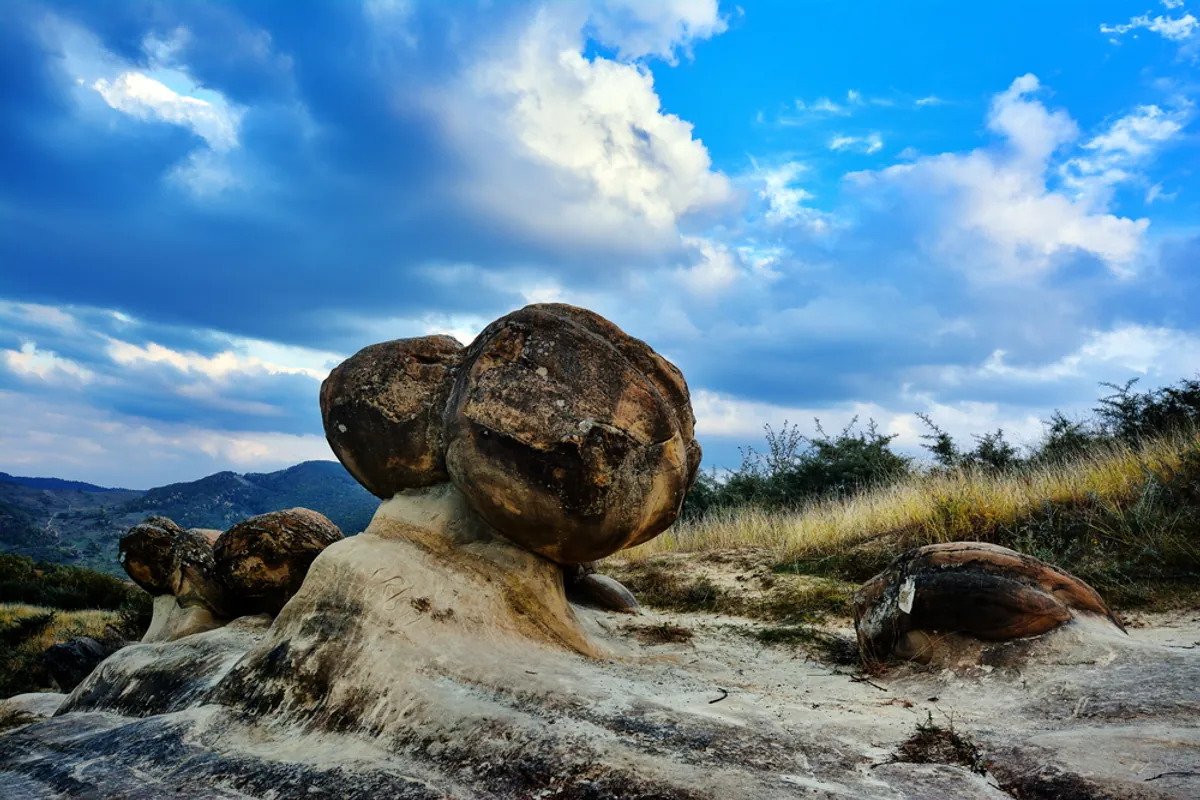The tiny Romanian town of Costești is home to a bunch of rocks like none other. Not content with the typical sedentary life of rocks, these bulging boulders slowly ooze their innards and can even appear to grow and move as if they were alive. Known as trovants, it’s no surprise the geological oddballs are also known as “living rocks”.
Little-to-no scientific studies have investigated trovants, but the strange stones have attracted the attention of plenty of geologists and tourists over the years. They can be found in numerous odd locations dotted in the area north of Romania’s capital Bucharest.
There’s some debate around this, but it’s thought that trovants are sandstone concretions with tough outer layers of sand, a bit like an M&M. These concretions are harder than the rocks around them, so when the surrounding softer bedrock is eroded away they can emerge out of the Earth.
A “Living rock” looks over the landscape in Buzau County, Romania.
Image credit: aaltair/Shutterstock.com
When it rains upon the rock, rainwater reacts with the mineral content of the concretions, causing its innards to leech out and resulting in the appearance of the rock expanding. Alternatively, this may form large bubble-like growths, which almost look as if the rock is spawning an offspring.
Of course, we’re talking about geology here, so this is happening really, really slowly. It’s estimated that the rocks “grow” less than 5 centimeters (2 inches) in 1,200 years. Don’t expect to catch this phenomenon in a timelapse video.
Oh look, another.
Image credit: Pixachi/Shutterstock.com
“Trovants are basically ovoid or spherical in shape, although they may occur in a large variety of shapes,” Florin Stoican, co-manager of the Buila-Vanturarita National Park, told Radio Romania International in 2010.
“Their history is rather simple. Seven million years ago there was a delta where the present-day stone quarry is. This delta contained sediments, sandstone and siltstone in particular, amassed and transported from across the continent by a prehistoric river. Subsequently, various mineral substances dissolved into solutions that circulated over this basin of gravel and sand,” he added.
“These minerals acted as cement and glued together various sedimentary particles. Today, there are trovants with diverse compositions. Some are made from sandstone, others from gravel. In geological terminology, they are made from gritstone and conglomerates,” continued Stoican.
An earlier version of this article was published in January 2023.
Source Link: These Mysterious "Living" Rocks Seem To Give Birth To Baby Stones
